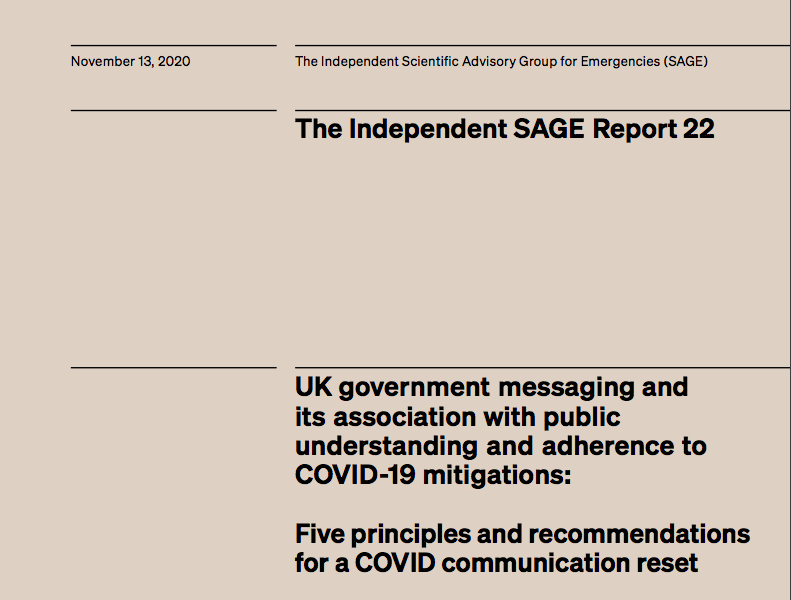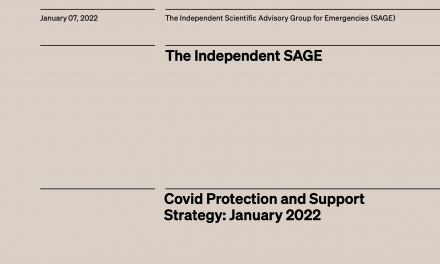The UK is currently experiencing a second wave of the SARS-CoV-2 pandemic and England began a second national lockdown on November 5th 2020. Independent SAGE’s “Emergency six-week plan for England in response to rising cases, hospitalisations and deaths” (October 16th), urged the UK government to reset its communication strategy in order to bring the clarity required for people to understand precisely what to do. Precise messaging is more readily understood which, in turn, enables adherence and consistent behavioural enactment. Imprecise, inconsistent, contradictory, untimely, or vague messaging, by contrast, can lead to mistakes, perceived inequities, frustration, and nonadherence.
This report charts the associations between UK government messaging and public understanding of, support for, and adherence to COVID-19 law, rules, guidance, and mitigations between March and October 2020 (e.g., from “Stay Home” to “Stay Alert” and beyond). We present five recommendations to achieve the communication reset needed.
Five principles for an effective COVID-19 lexicon
1. Messaging never merely provides factual information – communication unavoidably conveys many assumptions (the subtext, indirect meanings, inferences, and implications).
2. Messaging should be lexically and grammatically precise and thus easy to enact and adhere to.
3. Messaging should be ‘irony-resistant’.
4. ‘Branding’ or sloganeering should not come at the expense of clarity and precision.
5. Messaging should be underpinned by evidence about what is effective.




